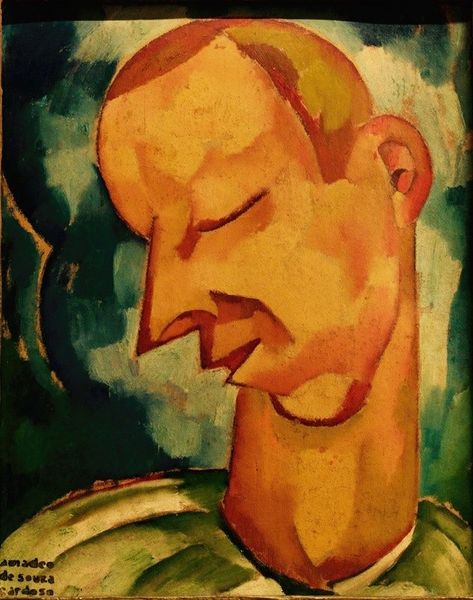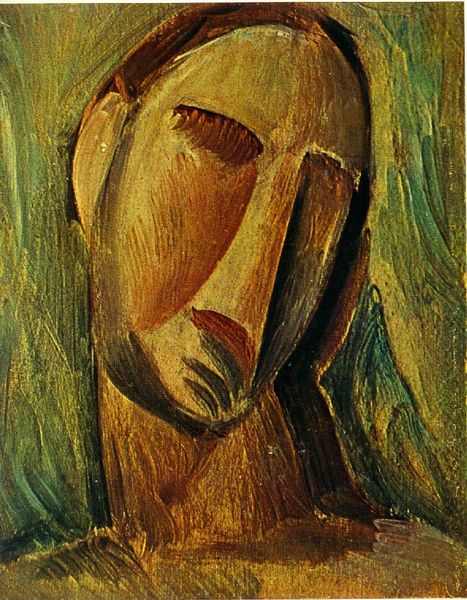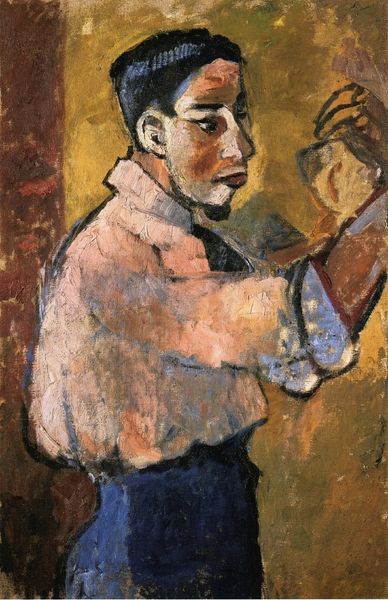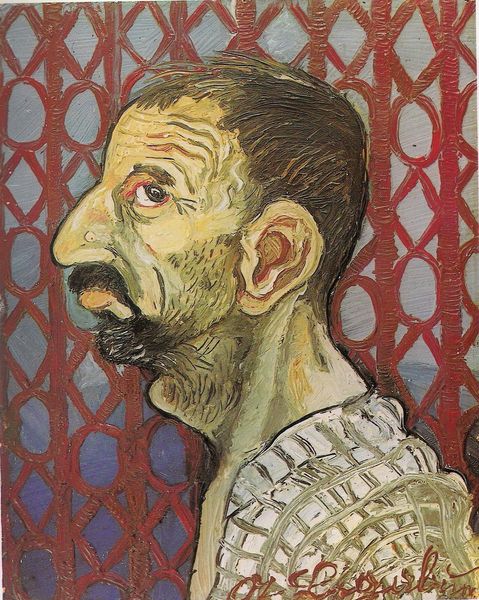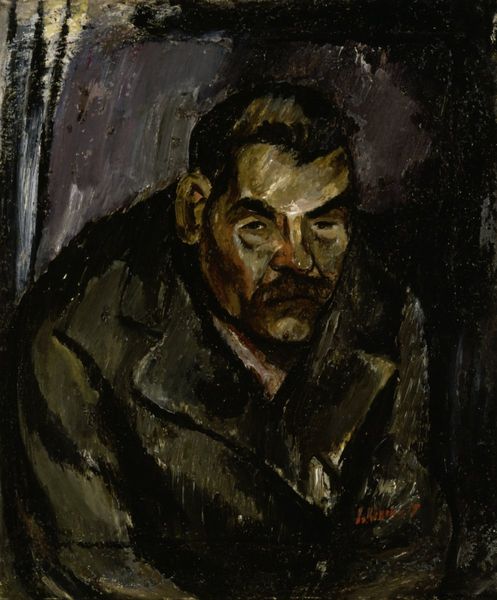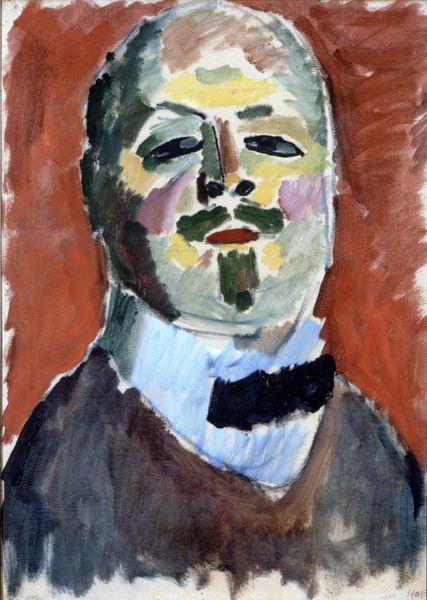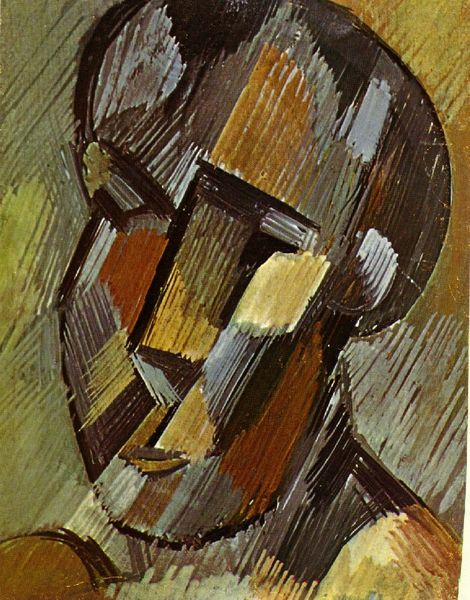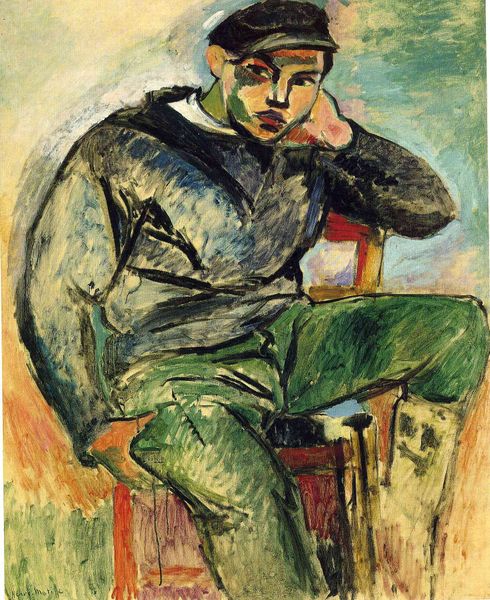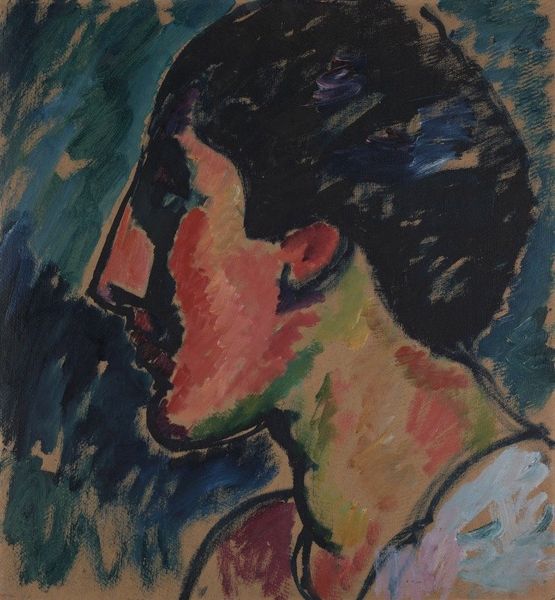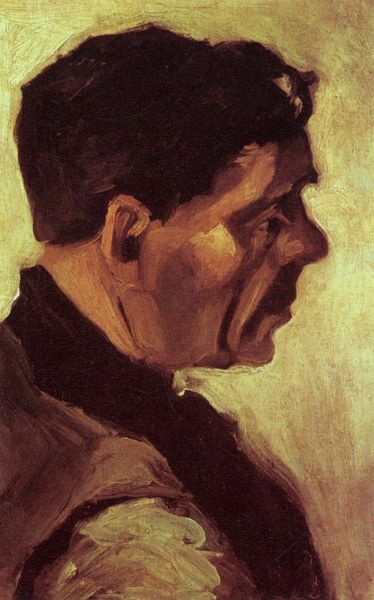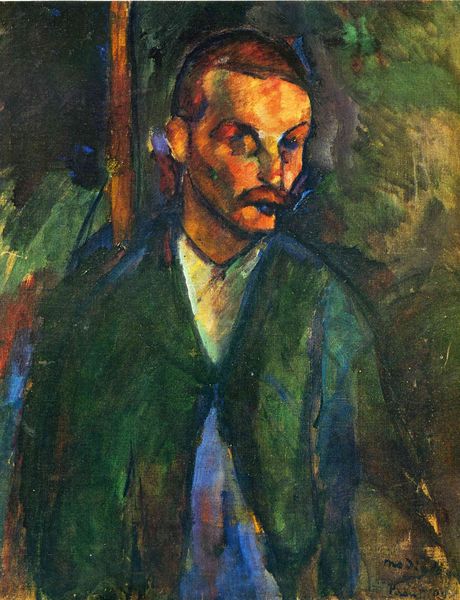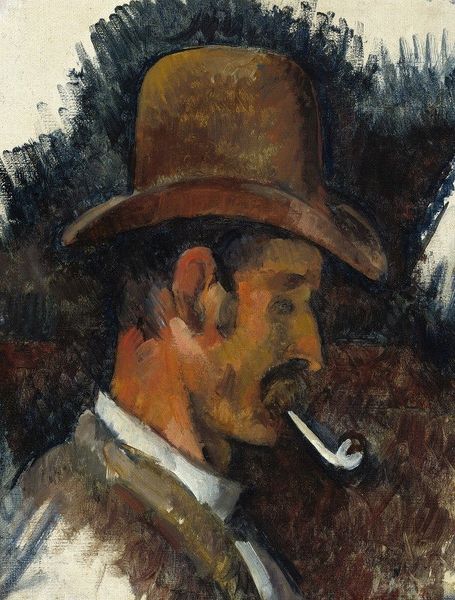
oil-paint
#
portrait
#
cubism
#
oil-paint
#
figuration
#
oil painting
#
early-renaissance
#
modernism
Dimensions: 15.5 x 18 cm
Copyright: Public domain US
Curator: This is Picasso’s “Head of a Man,” painted in 1908, and currently residing here at the Musée Picasso in Paris. This particular oil on canvas work demonstrates a nascent exploration of Cubism in his portraits. Editor: Oh, he looks so burdened, doesn't he? Like he's carrying the weight of the world or at least some seriously heavy thoughts on those squared-off shoulders. I find his face, reduced to these almost architectural blocks, quite emotive. Curator: Precisely. We can interpret this reduction not merely as aesthetic, but also as a reflection of the burgeoning social anxieties present in Europe at the time. The fracturing of form mirrors a fracturing of societal norms and the questioning of identity itself. He might not literally be carrying the weight of the world, but that sense of male responsibility can be seen through an intersectional, Marxist, maybe even feminist lens. Editor: Wow, okay, you went deep fast! I was just thinking how the muted palette adds to that melancholic vibe. That swirling blue background, too, it feels like he's sinking into it. Curator: Absolutely, color and composition are never politically neutral. Consider how Picasso departs from traditional portraiture that centered on the male gaze as one of power; the angle subverts power structures. The viewer gazes at an abstracted and weary figure, and is therefore prompted to consider their own relationship to positions of authority and vulnerability. Editor: I always felt that early Cubism looked almost like detective work. Picasso dissecting a face to discover hidden truths and reassembling it. I wonder, what was this person like? Was this Picasso experimenting with his friend’s features, to see how much could be cut, added or simply implied, as his way of portraying his character? Curator: Fascinating point, that's very likely! Art critics highlight its status within Picasso's wider oeuvre during his radical development of analytic Cubism as a style and that it has political and artistic dimensions of its own. This approach, after all, would soon alter art's course for centuries. Editor: A little heavy perhaps, but certainly interesting. Thanks for a more socio-historical understanding, though. Curator: It's vital for viewing, if we are trying to consider this piece today. Thank you!
Comments
No comments
Be the first to comment and join the conversation on the ultimate creative platform.
